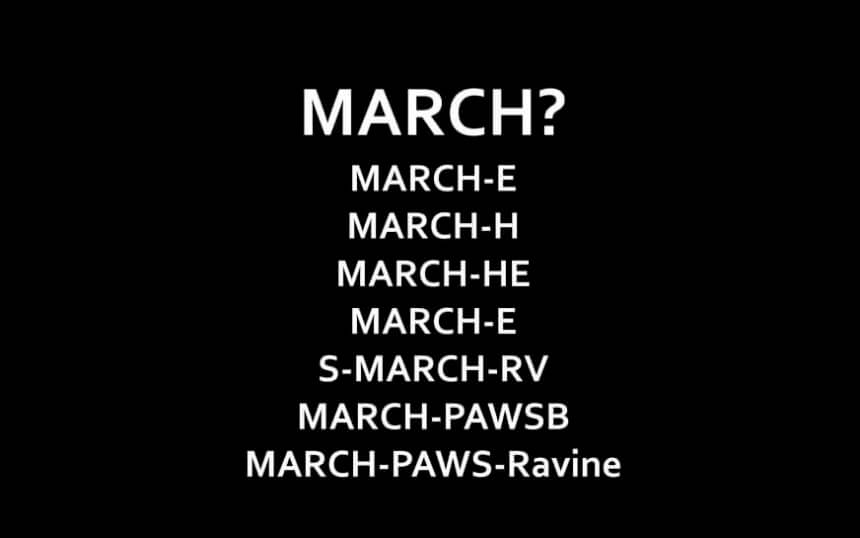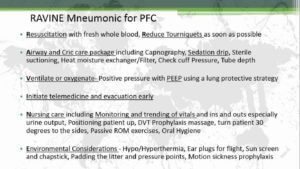
MARCH Versions
- Posted by Mike Shertz MD/18D
- Categories MARCH
🕖 Reading Time, 3 minutes
The MARCH mnemonic is a superior model for evaluation of trauma patients compared to the traditional A, B, C model. The Airway, Breathing, Circulation model fails in root cause analysis: The ultimate goal of having an open airway is to oxygenate blood, which is best done while still in the body. Stopping massive bleeding must be the first priority because failure to do so would render the remaining priorities pointless if the casualty dies of massive hemorrhage.
There are different versions of MARCH, which with the exception of one, add additional lower level priorities to the mnemonic. Each has value, but they can become complicated to remember.
I prefer the simple MARCH version, though my next favorite is S-MARCH-RV which I learned from another SF medic as it places the highest priority of casualty evaluation on S – security, as the first letter because the most important priority in all tactical casualty care is to keep everyone safe.
The versions of MARCH are nearly as numerous as the medics who apply it.
TRAIN NOWOnline Tactical Casualty Care Class
The standard MARCH is:
Massive hemorrhage
Airway
Respiration
Circulation
Hypothermia prevention
Then others use:
MARCH-E (Everything else) – Popular with the Canadians
MARCH-H (Head injuries)
MARCH-HE (Head injuries & Everything else)
MARCH-E (Eye injuries)
S-MARCH-RV (Security, Recovery position, Vital signs)
Once you consider prolonged field care, the mnemonics get even longer.
MARCH-PAWSB (Pain control, Antibiotics, Wound dressings, Splinting, Burn treatment)
Then they get so long, you need a tattoo to remember it:
MARCH-PAWS-Ravine (See PAWSB above, and add to it:)
R Resuscitate with whole blood and reduce tourniquets as soon as possible
A Airway and Cric care package: Sedation, capnography, tube depth, cuff pressure, sterile suction
V Ventilate and oxygenate using PEEP / lung protective strategies
I Initiate telemedicine consult and early evacuation
N Nursing care, I&Os, Oral hygiene, turn casualty
E Environmental Considerations, pad pressure points of the litter, Earplugs for flight, medication for motion sickness

Dr. Mike Shertz is the Owner and Lead Instructor at Crisis Medicine. Dr. Shertz is a dual-boarded Emergency Medicine and EMS physician, having spent over 30 years gaining the experience and insight to create and provide his comprehensive, science-informed, training to better prepare everyday citizens, law enforcement, EMS, and the military to manage casualties and wounded in high-risk environments. Drawing on his prior experience as an Army Special Forces medic (18D), two decades as an armed, embedded tactical medic on a regional SWAT team, and as a Fire Service and EMS medical director.
Using a combination of current and historical events, Dr. Shertz’s lectures include relevant, illustrative photos, as well as hands-on demonstrations to demystify the how, why, when to use each emergency medical procedure you need to become a Force Multiplier for Good.



